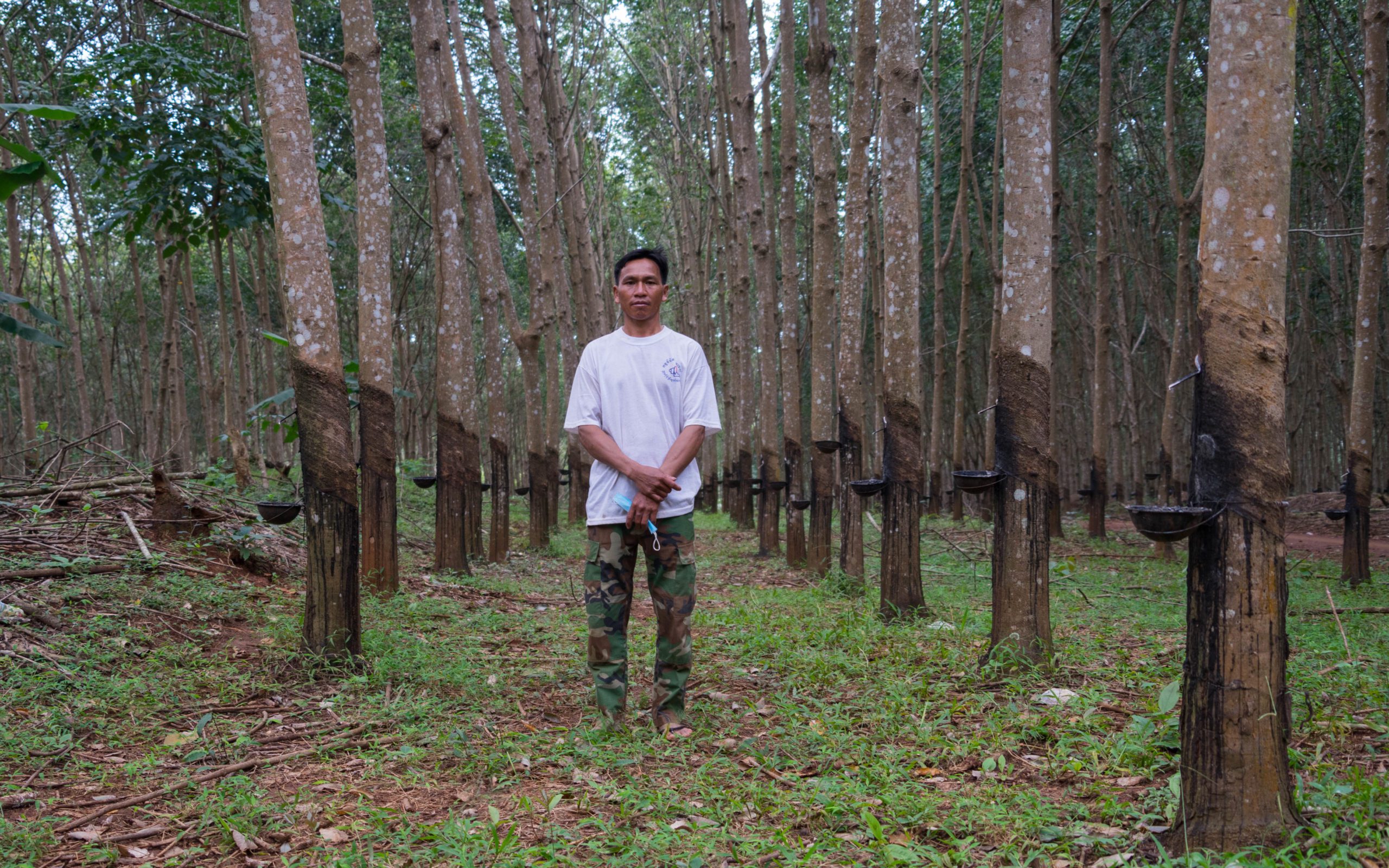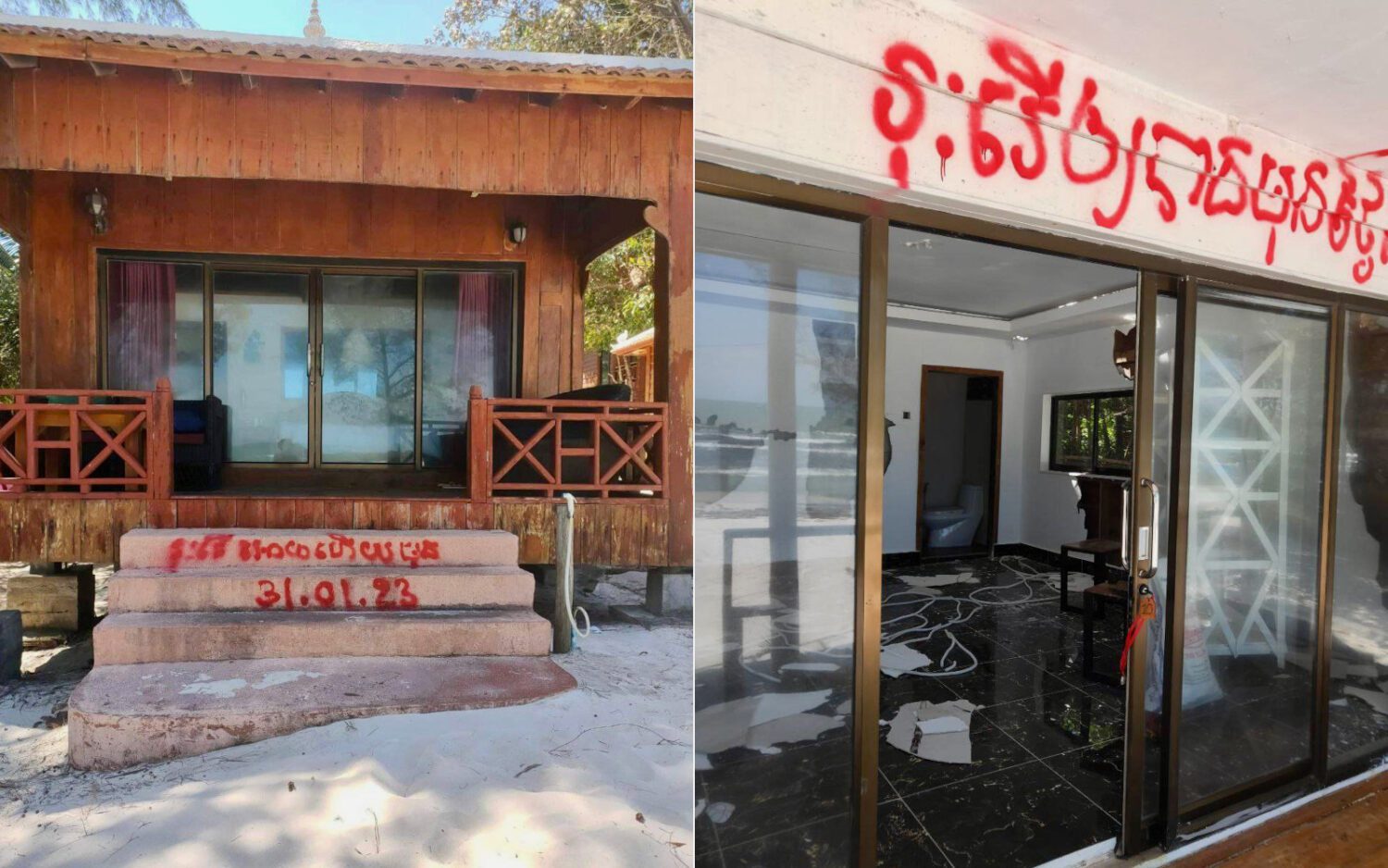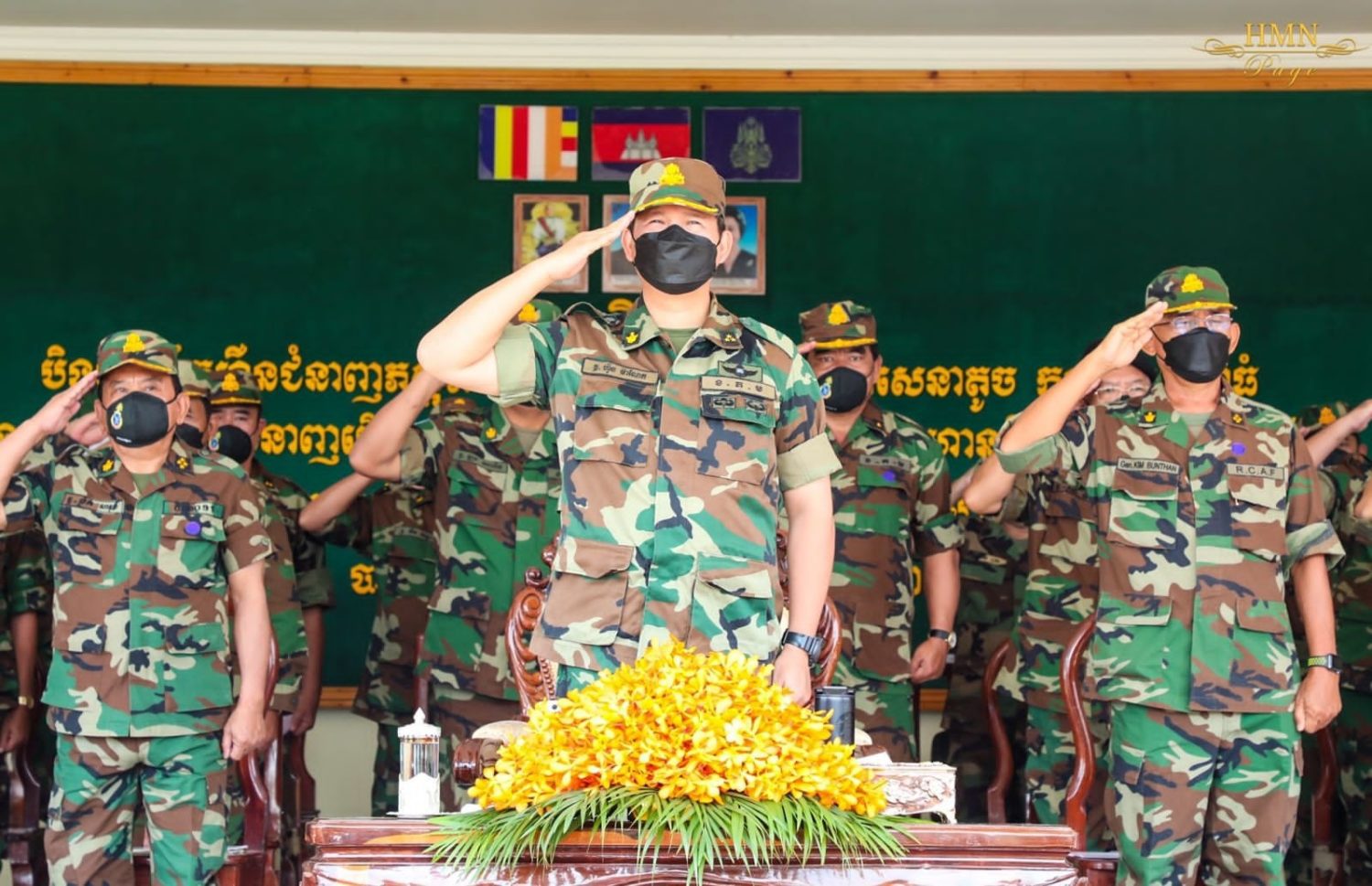A French appeal court is today set to hear a Bunong community’s lawsuit about a rubber plantation built on ancestral land. Their traditional claims to land are in contention. But in Mondulkiri, villagers say debt and wage labor are supplanting their traditions.
PECH CHREADA DISTRICT, Mondulkiri—Seated on his motorcycle, Khlang Thol points out an area with his finger. “This is where my field used to be. I was growing rice and fruit trees on this roughly 3-hectare land,” says the 43-year-old farmer. “If any food was missing, I would go find it in the nearby forest.”
Following his ancestors’ traditions, Thol would change the location of his field every five to six years, in order to let the earth regenerate without the use of chemicals. “What I could grow in a year was enough to feed my wife and my six children,” he says.
But these days, the only thing that remains of Thol’s former rice field are rubber trees, perfectly aligned as far as the eyes can see, in this remote area of Cambodia’s highlands.
Like around 800 other families of Bosra commune, in the eastern province of Mondulkiri, Thol is from the Bunong ethnic minority, an indigenous and mostly animist ethnic group that has been practicing a traditional way of life for centuries. For Bunong, mir, meaning land, is the central element of their culture: The Bunong rotate plots and production among families, without any real notion of individual property.
But since 2008, Thol can no longer cultivate his fields the way his ancestors always did. That year, the Cambodian government granted an economic land concession, commonly referred to as an ELC, to Socfin-KCD, a subsidiary of the Luxembourg-based group Socfin, a company specializing in palm oil and rubber production. The following year, the company received a second ELC alongside the borders of the first one. The two concessions, held under two Cambodian-registered subsidiaries called Varanasi and Sethikula, cover 6,659 hectares of land on leases of 70 and 99 years, respectively. Within a few years, the primary forest was cut down and the fields were destroyed to produce natural rubber at an industrial scale.
For the Bunong, these ELCs rang the death knell for their traditional way of life. Deprived of their livelihoods, they entered abruptly into the market economy.
“Everything has changed since the company arrived. Before that, our crops were enough for most of our needs. But now we have to work to earn money….that we mostly spend to buy the food we used to produce ourselves,” says Krey Quin, a member of the community.
In 2019, then aged 48, he borrowed money for the first time in his life from a microfinance institution. “I now have to commute more than before to find small jobs across the region, so I needed a motorbike,” he explains.
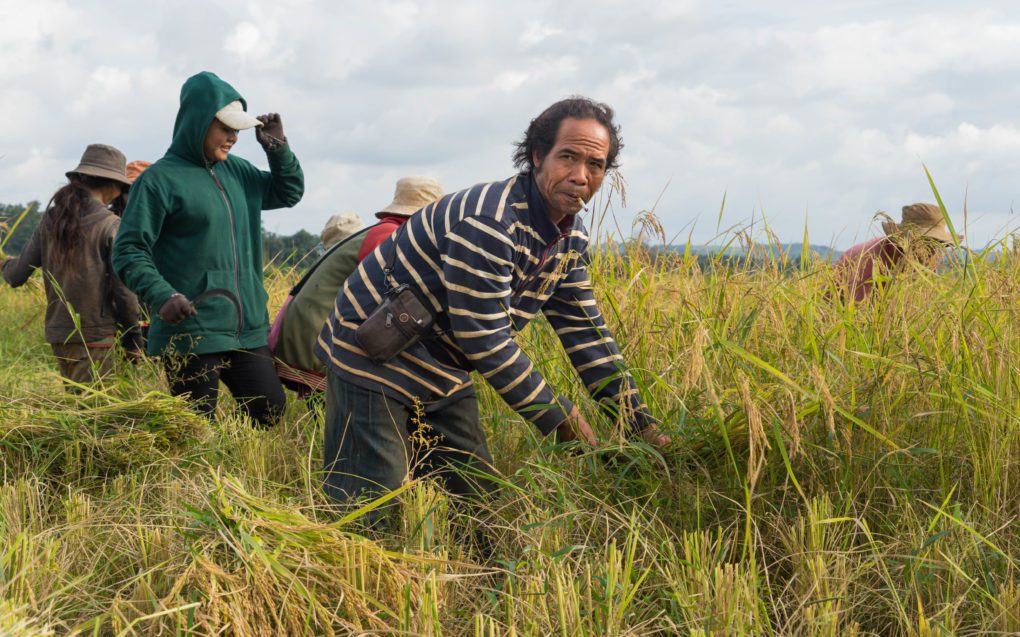
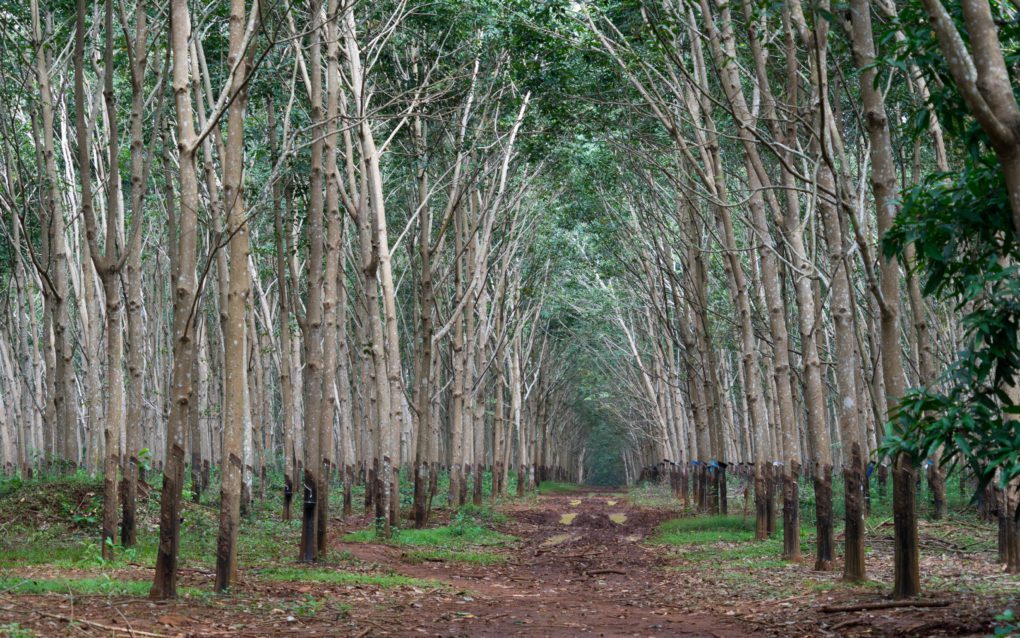
At the root of the community’s issues stands the complex recognition of land ownership for indigenous communities in the country. According to the U.N.’s human rights office in Cambodia, the country is home to 455 indigenous communities, representing 179,000 individuals. Since 2001, Cambodia’s Land Law established the recognition of communal land, a legal scheme that aims to protect the ethnic communities’ land from encroachment. But the process is “very long, expensive and complicated,” notes the U.N. office said in an email, estimating that it would take 100 years to validate all the communal land at the current pace.
Like most of Cambodia’s indigenous communities, the Bunong in Bosra didn’t have any land titles when Socfin-KCD received its two ELCs. As compensation, the company offered the Bunong the possibility to either receive $200 per hectare of land they lost, or receive land further outside the concessions. A complicating factor was that most community members didn’t know exactly the size of the areas they farmed. A third kind of compensation was to start growing and collecting rubber as independent harvesters inside the company’s land. Quin chose this last option. “I earn around $200 a month with the rubber that I sell to a local buyer. This is just enough to pay the interests on my loan,” he says.
But not all the members of the community were happy with these compensation offers.
“For Bunong, land is life,” says Kroeung Tola, a community leader who didn’t accept any of the options the company offered. “I wanted my land back inside the concession, and not the land they offered for relocation, which was too small and too far away.”
Initially, he and other members of the community tried to find an agreement locally, involving authorities and Socfin-KCD, in order to get their land back. They also tried to get their land recognized communally as intended by the Land Law, but the process has been on hold since 2012.
“We didn’t trust the authorities in Cambodia anymore, so we decided to find a solution elsewhere,” Tola says, in reference to a judicial procedure they initiated 10,000 kilometers away from their small commune of Bosra.
In 2015, 80 community representatives took legal action in France against the Bolloré group, the indirect mother company of the Luxembourg-based Socfin group. Despite being a minority shareholder with 39.75 percent of the shares, a complaint has been filed against the French company on the grounds that it exerts real control over Socfin. After six years of judicial procedures, the case eventually reached a first conclusion in July, when the lower court of Nanterre, in suburban Paris, dismissed the Cambodians’ request, ruling that “none of the applicants can prove a real right to exploit the disputed lands.”
It was a decision that “didn’t take into account the local context of the case,” says Tola, who also conducts advocacy as a coordinator for Mondulkiri Indigenous People Network.
While a first appeal hearing is due to take place on December 13 in Versailles, Sek Sophorn, the Cambodian attorney in charge of the case, is “not very hopeful.”
“We submitted many documents showing the consequences of the concessions on the Bunong way of life, but the court is asking for title deeds,” he explains. “But it doesn’t mean I’m pessimistic. France is one of the states that voted in favor of the declaration on the rights for indigenous people. So I hope the French judge will take this into consideration when it comes to make a decision. There is no paper to prove the Bunongs’ land ownership due to their way of life, but it doesn’t mean they don’t have rights.”
Contacted by email, Dominique De Leusse, Socfin’s lawyer in the case, says his client does not wish to comment on an ongoing procedure.
Socfin-KCD, the Cambodia-based subsidiary, says in a statement provided to VOD that it is supporting “local development projects” by improving or maintaining roads, building bridges or installing water wells inside the village. After years of mediation with the Bunong, a range of agreements have also been signed to preserve 560 hectares of communal land inside the ELCs, including sacred forests and traditional cemeteries.
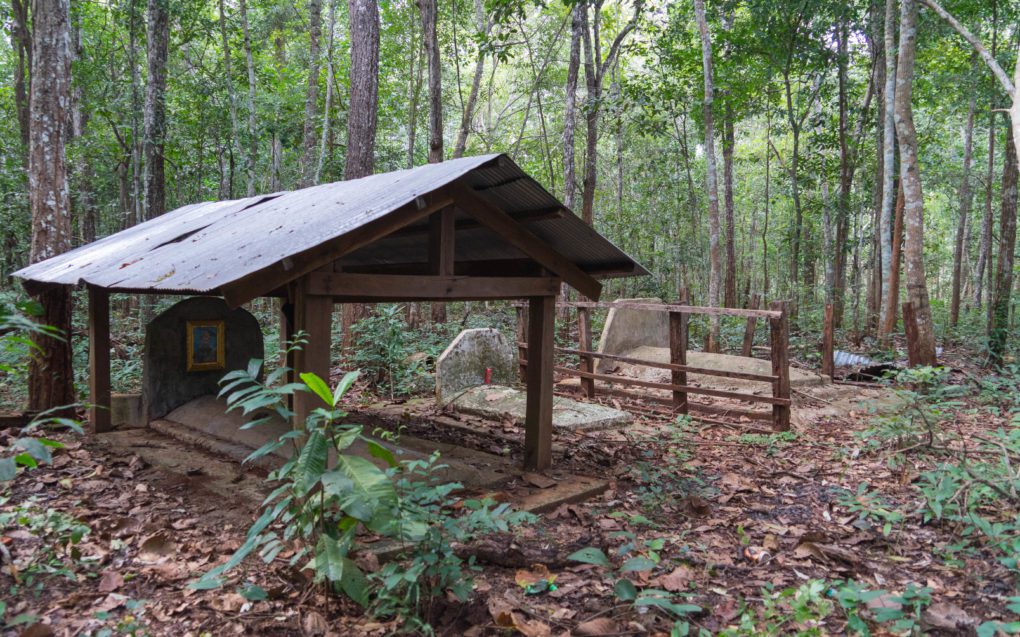
“They have destroyed most of them when they cleared the land,” says Thol, the 43-year-old farmer with six children, referring to the community’s cemeteries. “But I’m still grateful they left us three of them.”
However, the farmer is not convinced that what has been left by the company will be enough to preserve the Bunong culture, threatened by the disappearance of their land.
“I’m afraid the new generations will lose our traditions,” he says. “At home, we still speak Bunong in our family. But because everyone has to spend so much time working, I’m afraid parents and grandparents will lack time to teach kids about our traditions and language in the future.”
Additional reporting by Kong Raksmey and Lors Liblib


